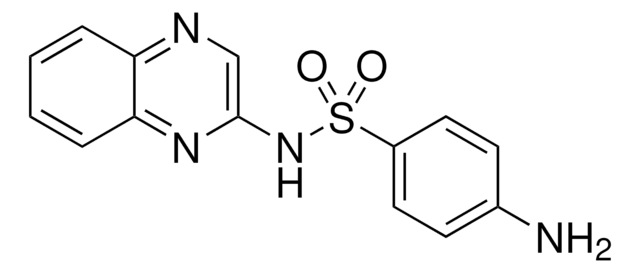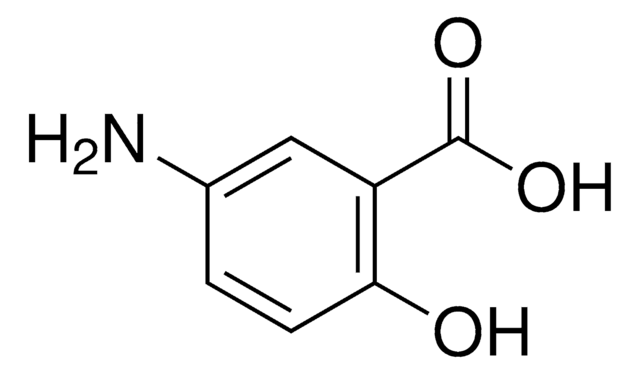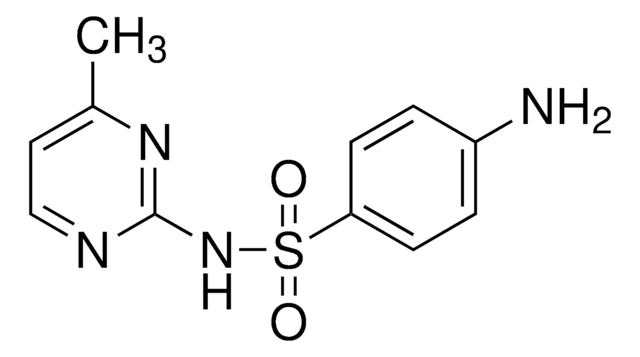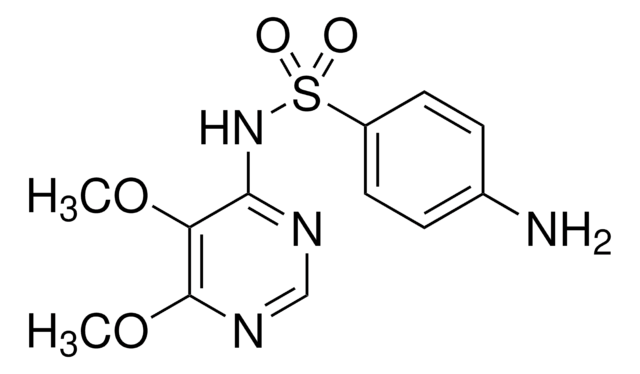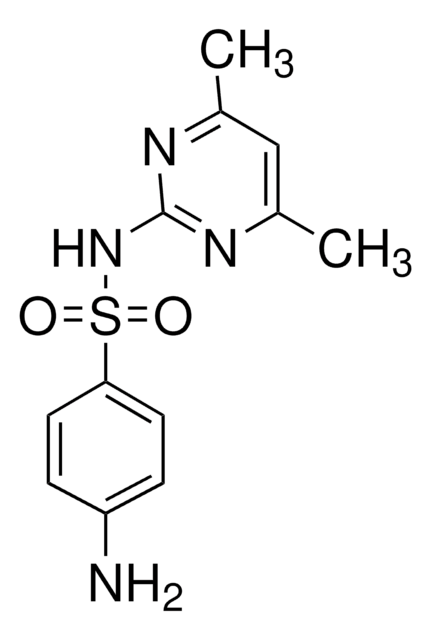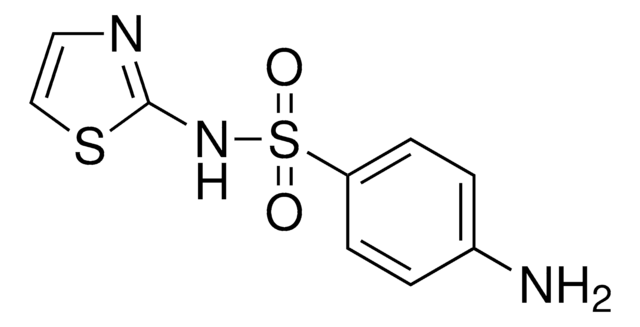Kluczowe dokumenty
1635206
USP
Sulfaquinoxaline
United States Pharmacopeia (USP) Reference Standard
Synonim(y):
4-Amino-N-(2-quinoxalinyl)benzenesulfonamide, Sulfaquinoxalin
About This Item
Polecane produkty
klasa czystości
pharmaceutical primary standard
rodzina API
sulfaquinoxaline
producent / nazwa handlowa
USP
Zastosowanie
pharmaceutical (small molecule)
Format
neat
ciąg SMILES
Nc1ccc(cc1)S(=O)(=O)Nc2cnc3ccccc3n2
InChI
1S/C14H12N4O2S/c15-10-5-7-11(8-6-10)21(19,20)18-14-9-16-12-3-1-2-4-13(12)17-14/h1-9H,15H2,(H,17,18)
Klucz InChI
NHZLNPMOSADWGC-UHFFFAOYSA-N
Szukasz podobnych produktów? Odwiedź Przewodnik dotyczący porównywania produktów
Opis ogólny
Zastosowanie
- Sulfaquinoxaline Oral Solution
Komentarz do analizy
Inne uwagi
produkt powiązany
Hasło ostrzegawcze
Danger
Zwroty wskazujące rodzaj zagrożenia
Zwroty wskazujące środki ostrożności
Klasyfikacja zagrożeń
Acute Tox. 4 Oral - Resp. Sens. 1 - Skin Sens. 1
Kod klasy składowania
11 - Combustible Solids
Klasa zagrożenia wodnego (WGK)
WGK 3
Wybierz jedną z najnowszych wersji:
Certyfikaty analizy (CoA)
Przepraszamy, ale COA dla tego produktu nie jest aktualnie dostępny online.
Proszę o kontakt, jeśli potrzebna jest pomoc Obsługa Klienta
Masz już ten produkt?
Dokumenty związane z niedawno zakupionymi produktami zostały zamieszczone w Bibliotece dokumentów.
Nasz zespół naukowców ma doświadczenie we wszystkich obszarach badań, w tym w naukach przyrodniczych, materiałoznawstwie, syntezie chemicznej, chromatografii, analityce i wielu innych dziedzinach.
Skontaktuj się z zespołem ds. pomocy technicznej